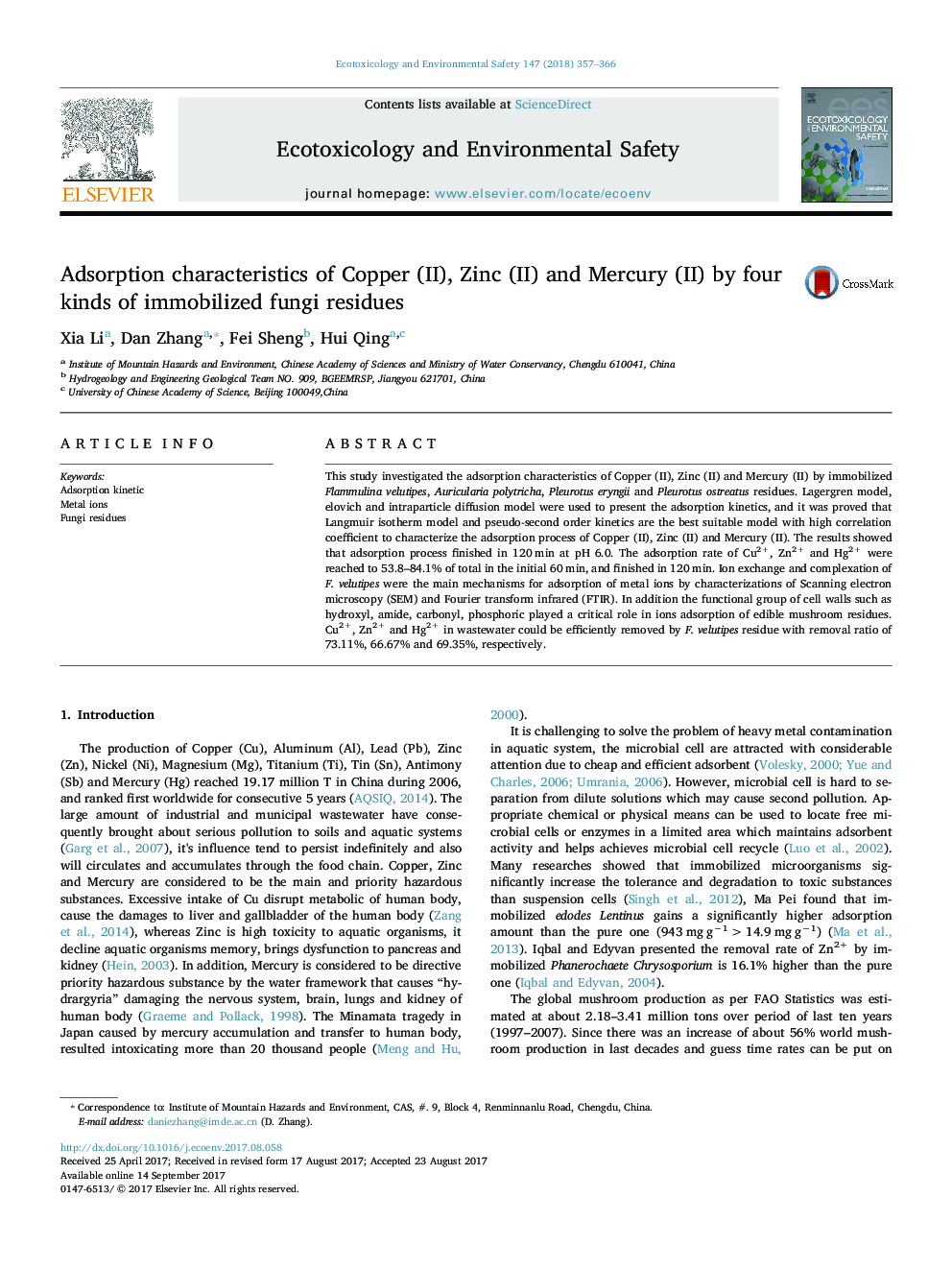| Article ID | Journal | Published Year | Pages | File Type |
|---|---|---|---|---|
| 5747866 | Ecotoxicology and Environmental Safety | 2018 | 10 Pages |
â¢We used fungi residues to reduce Cu2+, Zn2+ and Hg2+ in water.â¢Our study focused on the removal of lower concentration metal ions in water.â¢Functional groups of fungi residues in metal ions adsorbents were analyzed.â¢We proved metal ions could be efficiently removed by fungi residue.
This study investigated the adsorption characteristics of Copper (â ¡), Zinc (â ¡) and Mercury (â ¡) by immobilized Flammulina velutipes, Auricularia polytricha, Pleurotus eryngii and Pleurotus ostreatus residues. Lagergren model, elovich and intraparticle diffusion model were used to present the adsorption kinetics, and it was proved that Langmuir isotherm model and pseudo-second order kinetics are the best suitable model with high correlation coefficient to characterize the adsorption process of Copper (â ¡), Zinc (â ¡) and Mercury (â ¡). The results showed that adsorption process finished in 120Â min at pH 6.0. The adsorption rate of Cu2+, Zn2+ and Hg2+ were reached to 53.8-84.1% of total in the initial 60Â min, and finished in 120Â min. Ion exchange and complexation of F. velutipes were the main mechanisms for adsorption of metal ions by characterizations of Scanning electron microscopy (SEM) and Fourier transform infrared (FTIR). In addition the functional group of cell walls such as hydroxyl, amide, carbonyl, phosphoric played a critical role in ions adsorption of edible mushroom residues. Cu2+, Zn2+ and Hg2+ in wastewater could be efficiently removed by F. velutipes residue with removal ratio of 73.11%, 66.67% and 69.35%, respectively.
Graphical abstractDownload high-res image (174KB)Download full-size image
